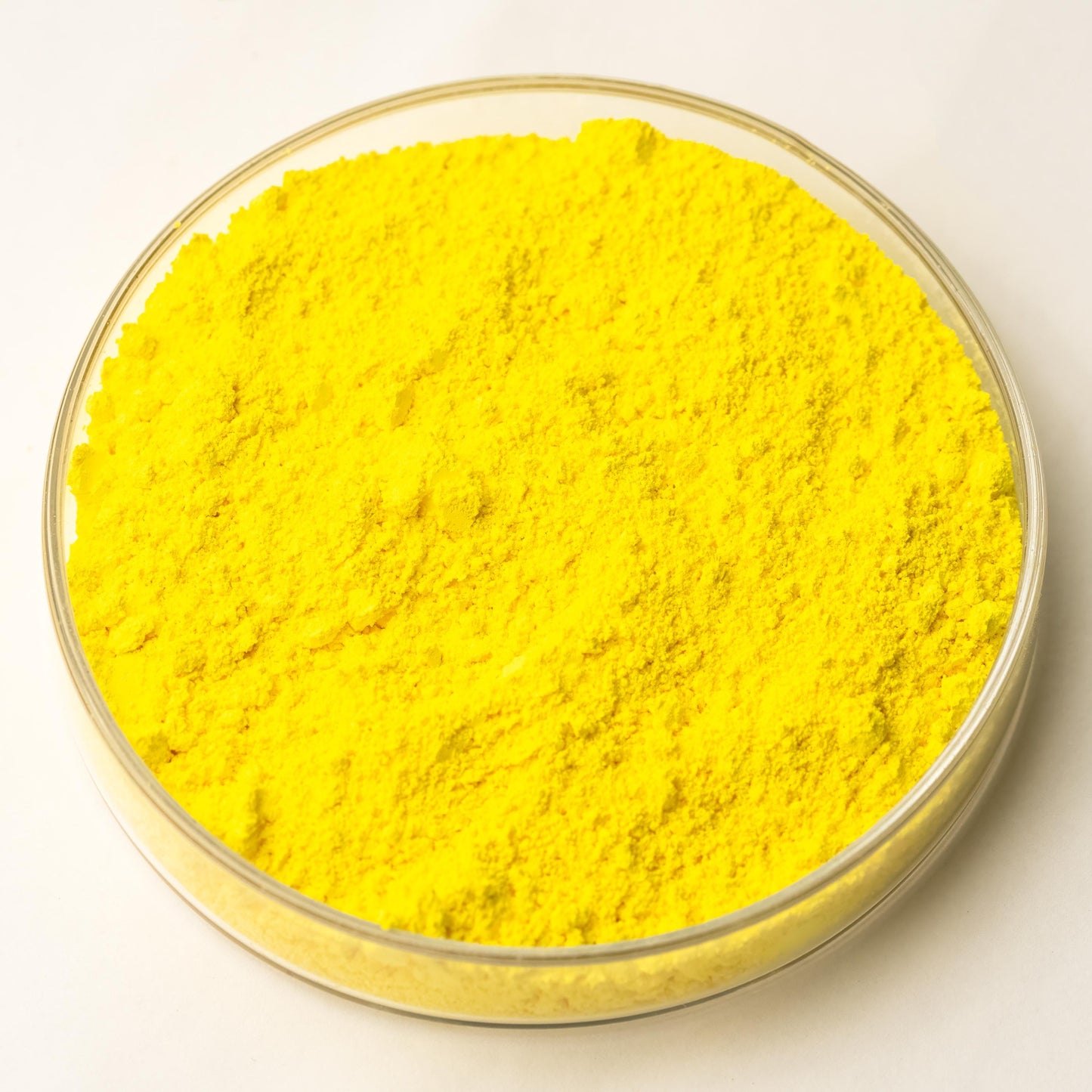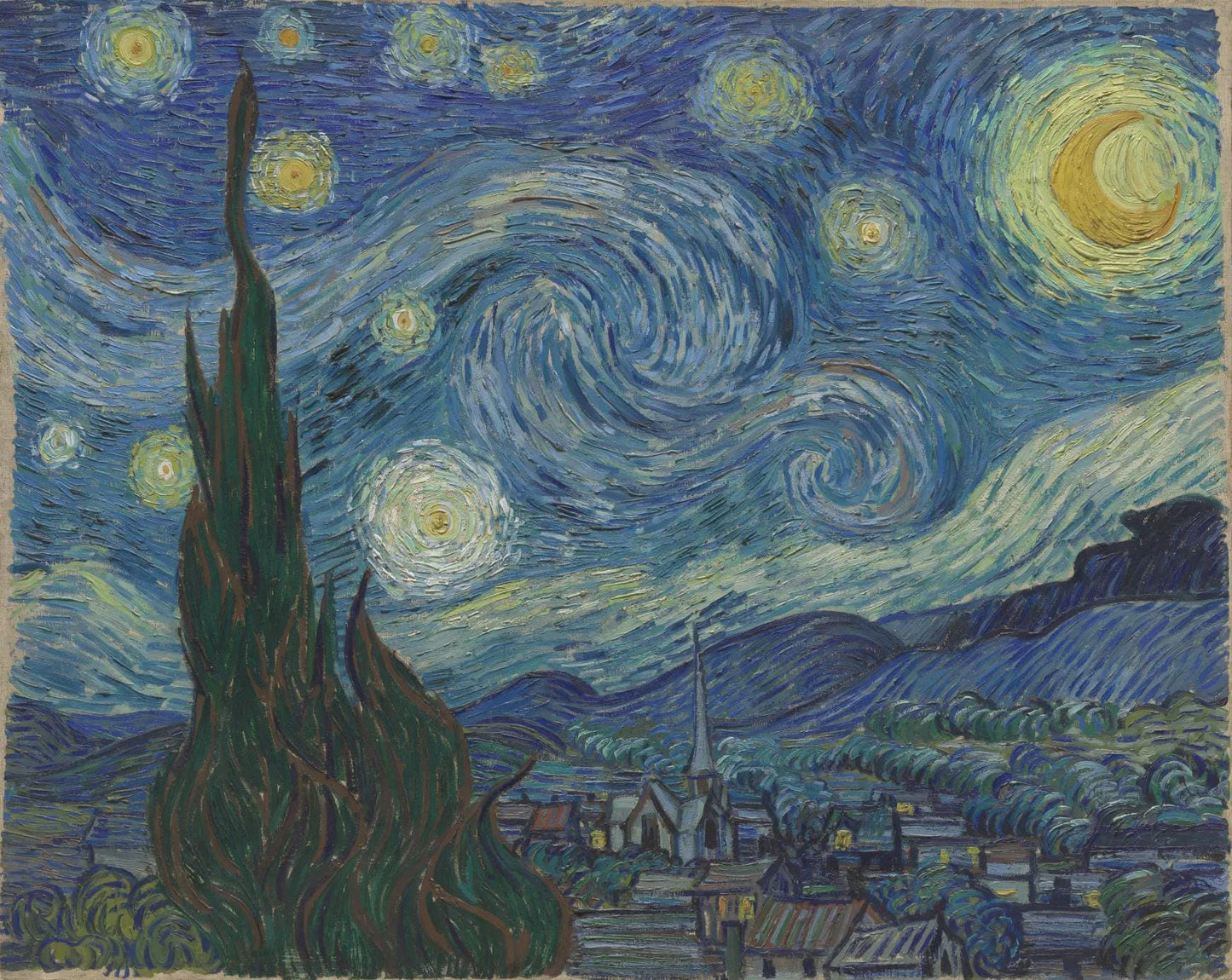Zinc-Chrome Yellow
Zinc-Chrome Yellow
Couldn't load pickup availability
Share


See Health Information
Description
Zinc-Chrome Yellow is a brilliant, opaque yellow pigment created by combining zinc chromate with lead chromate, producing a vibrant, warm yellow that leans toward greenish undertones. This pigment was widely manufactured in the 19th and 20th centuries for its striking brilliance, high opacity, and covering power. Its color ranges from lemon yellow to golden yellow depending on the formula.
Unlike natural ochres or botanical yellows, Zinc-Chrome Yellow offers unmatched intensity and saturation. It mixes beautifully into greens when combined with blues, and it provides a strong tinting strength ideal for underpainting, oil glazes, and industrial applications. However, like many chromium- and lead-based pigments, it requires careful handling and is not considered non-toxic.
History
The pigment was first developed in the early 19th century, when chromate chemistry was being explored for vibrant new colors. Artists quickly adopted Chrome Yellows for their brilliance, despite concerns over toxicity. By mid-century, Zinc-Chrome Yellow formulations were favored in both artistic and industrial paints because they resisted fading better than pure lead chromates.
It was extensively used in Impressionist and Post-Impressionist painting palettes. Vincent van Gogh famously employed Chrome Yellow in many of his works, including Sunflowers, where its luminosity gave petals and backgrounds a glowing intensity. Industrially, zinc-chromate mixtures were applied as anti-corrosion primers and bright enamels through the 20th century. In the pictured artwork "The Starry Night" by Vincent Van Gogh, True Indian Yellow is used mixed with Zinc Yellow for the gorgeous rich yellow of the crescent moon.
Today, because of its toxicity, it has largely been replaced by safer alternatives such as cadmium yellow or modern organic pigments. Historical and conservation work, however, still recognizes Zinc-Chrome Yellow as a critical part of art history and color development.
Health and Safety
Warnings:
CANCER AGENT.
INHALATION MAY PRODUCE CANCER.
EXPOSURE MAY CAUSE HARM TO THE PREGNANT PEOPLE OR DEVELOPING FETUS.
INHALATION MAY CAUSE LUNG DAMAGE.
CONTAINS CHROMIUM.
Precautions:
Keep out of reach of children and pets.
Do not consume.
Not for cosmetic or food usage.
Do not spray apply.
For further health information contact a poison control center.
Use care when handling dry pigments and avoid dust formation.
Use particular caution with fibrous, fine, or toxic pigments.
Do not eat, drink, or smoke near dry pigments.
Avoid breathing in pigment dust and use a NIOSH-certified dust respirator with sufficient rating for dry pigment.
Wash hands immediately after use or handling.
If dust is likely, always wear protective clothing to keep out of eyes, lungs, off skin, and out of any contact as well as keep area ventilated.
This product may contain chemicals known by the State of California to cause cancer, birth defects, or reproductive harm.
Warnings and bottle information are abbreviated.
Pigment Information
Pigment Type: Synthetic Inorganic (Zinc Chromate)
Suitable Mediums: Historically used in Oil, Tempera, and Industrial Enamels (not recommended for modern general use due to toxicity)
Lightfastness: Good to Excellent (varies by formulation)
Opacity: Opaque
Other Names: Zinc Yellow, Chrome Yellow, Zinc-Chromate Yellow
Color Index Code: PY36
Image: "The Starry Night" by Vincent Van Gogh from the MOMA


